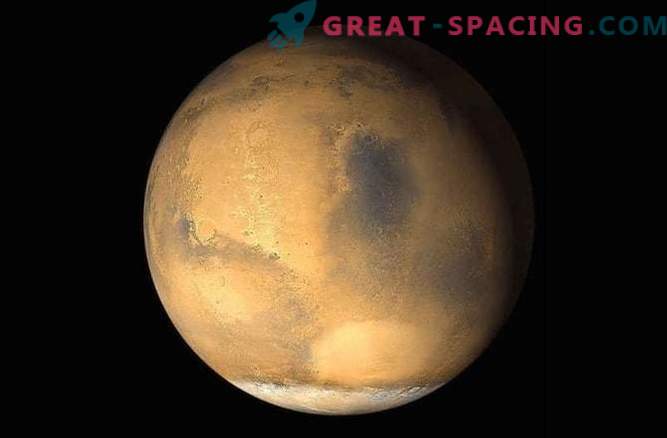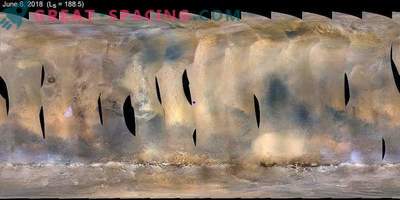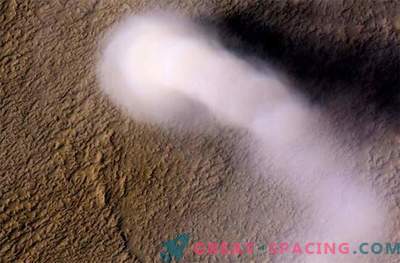
Local dust storms are a common event on the Red Planet. But they can escalate into storms covering the whole of Mars.
The raging Martian dust storm is expected to roll across the Red Planet in the next few months. This is reported by recent studies that have found a way to predict these unstable weather events.
Global Martian dust storms threaten robotic rovers crossing the surface of the planet, as well as astronauts who can one day set up a camp on the Red Planet. However, based on past weather conditions, very soon, Martian dust storms can become a fairly predictable event. And NASA believes that if history repeats itself, then the next storm lurks just around the corner.
“The current Martian season of dust storms will reach an average mark this year on October 29,” said NASA planetary scientist James Shirley in a statement. “Relying on the historical pattern we have discovered, we believe that an all-encompassing dust storm is likely to begin to form in the coming weeks or months from that date.”
Local dust storms occur on Mars quite often. However, these localized phenomena can transform into regional or, in some cases, global storms. NASA officials reported that the dust storm season usually peaks in the spring and summer in the southern hemisphere of the planet when Mars comes closest to the Sun. Dust storms on the planet create a massive fog covering the whole of Mars. The last serious dust storm on the Red Planet occurred in 2007. During this storm, NASA's Spirit and Opportunity rovers received too little solar energy, but still maintained their performance.
“Since the landing, the global dust storm in 2007 has become the first major obstacle for rovers,” said Spirit and Opportunity project manager John Callas. “We had to resort to special tricks to ensure their survival for several weeks with a small supply of sunlight, which should have been enough to feed. Each rover included food for only a few minutes a day. That was enough to heat them up and turn them off until the next day. And all this without connection with the Earth. For many days, during the strongest of the storms, the rovers remained on their own. ”
Until 2007, serious Martian dust storms were recorded in 1971, 1977, 1994, and 2001. Using data on the orbital motion of Mars, Shirley discovered a pattern in the appearance of these phenomena. He noted that other planets influence the momentum of Mars in the same way as the rotation around the center of gravity of the solar system.
The impulse of the planet grows and decreases in the cycle, which takes 2.2. of the year. This is slightly more than the Martian year (1.9 years). Shirley discovered that global dust storms occur, as a rule, when the impulse increases in the first half of the dust storm season, and this does not happen every year on Mars. This is stated in a new study published in May 2015 in the journal Icarus. The new data coincides with the weather data that was observed in the past. Thus, none of the large-scale dust storms were formed in the first part of the season, when the impulse of Mars was decreasing, NASA officials said in a statement.
Current observations of the Martian atmosphere indicate that the conditions of dust storms this year are similar to those recorded in previous seasons. However, the global dust storm has yet to grow.
In late August, several local dust storms escalated into a major regional storm that formed in early September. But she diminished her strength before transforming into a storm. The Mars Reconnaissance Orbiter (Mars Interplanetary Station) will closely monitor the Red Planet to record how storms develop over the next few weeks.










































